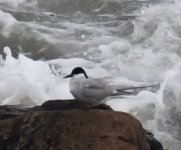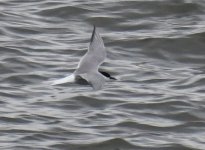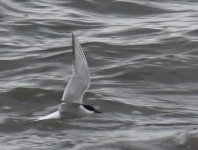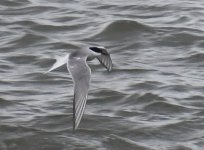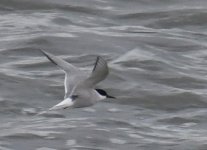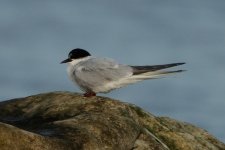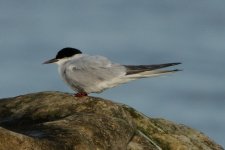
Anyone have any thoughts on this tern, photographed at Girdle Ness, Aberdeen today? It looks a bit 'interesting' to me but I'm not sure how far beyond 'interesting' it's possible to go.
I have other photos but they generally show the same features.
I have other photos but they generally show the same features.




